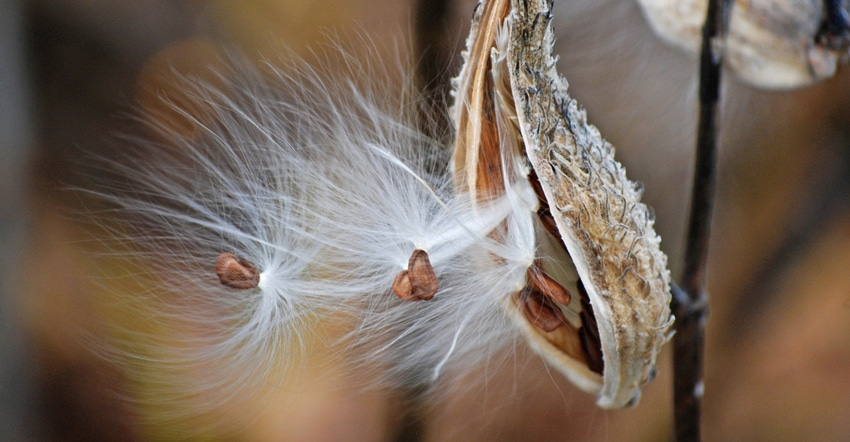June 10, 2022

Long-distance dispersal is how species migrate across the miles, maintain genetic variability, and will potentially adapt to climate change. It happens with birds, bears and snakes, but it also occurs in plants.
For instance, coconuts float across oceans, and with luck, sprout on a faraway island. But there is even more common dispersal happening all the time and close to home.
Seeds on the move
Along Ozark rivers, wild gourds with fruits that resemble large bobbers can float for hundreds of miles when the waters rise. At one time, Native Americans used wild gourds as floats for fishing nets.
Other native plants living near creeks and rivers with floating or buoyant seeds include sedge, rush, iris, arrowhead, rose mallow, monkey flower, water plantain and pipevine. But it is not just the water; seeds are also carried with the wind.
Milkweed, willow, aster, groundsel, goldenrod and blazing star have fluffy seeds that can fly for hundreds of miles on a steady breeze. Willow seeds fluff out and take to the breeze in May. That is why black willow quickly shows up in every ditch and pond.
Milkweeds begin their aerial journey in late summer and fall. It is not uncommon to see them floating in the breeze at the same time that monarch butterflies begin their migration south.
Travelin’ tumbleweed
However, tumbleweeds are my favorite example of dispersal. You know, the ones that appear in old Westerns. A drive through Kansas or Colorado reveals how they roll and bounce across the Great Plains during the dry season, until they get caught by a fence.
We have tumbleweeds in the lower Midwest. You don’t typically see them on highways, but you may see them rambling across the backyard, or an ancient wild prairie remnant, where they are free to travel long distances with the assistance of strong winds.
Our local tumbleweeds are blue and white wild indigo. Yellow wild indigo is less common in the wild, but more common in gardens. They begin tumbling in late November or December when the base of the main stalk rots off neatly at ground level.

SPINNING SEEDS: Tumbleweeds are an icon in states such as Kansas, but Missouri farmers can catch a glimpse of them as they deposit native seeds along their travels through Missouri pastures.
At this point, the mass of dead plant stems, leaves and viable seeds in black pods is as wide as it is tall, and is the shape and weight of a beach ball. You can imagine how fast and far a beach ball can travel, bouncing over a wide-open prairie. They eventually run into a fence or a woodland edge where they come to rest, until the wind changes direction.
Wild indigos carry their seed in pods that are tightly held at first, but when they dry out and start bouncing over the ground, seeds fall out along the way: long-distance dispersal.
So in your garden, don’t cut that stalk. Wait for the first winds of winter to jostle your indigos free. And when they hit the other side of the garden, wait for them to go the other way the next time the wind picks up in the other direction.
Who knew how much fun could be had with tumbleweeds in the confines of a farm yard?
Woodbury, a horticulturist, is a curator of the Whitmore Wildflower Garden at Shaw Nature Reserve in Gray Summit, Mo., and an adviser to the Missouri Prairie Foundation’s Grow Native! program.
About the Author(s)
You May Also Like




